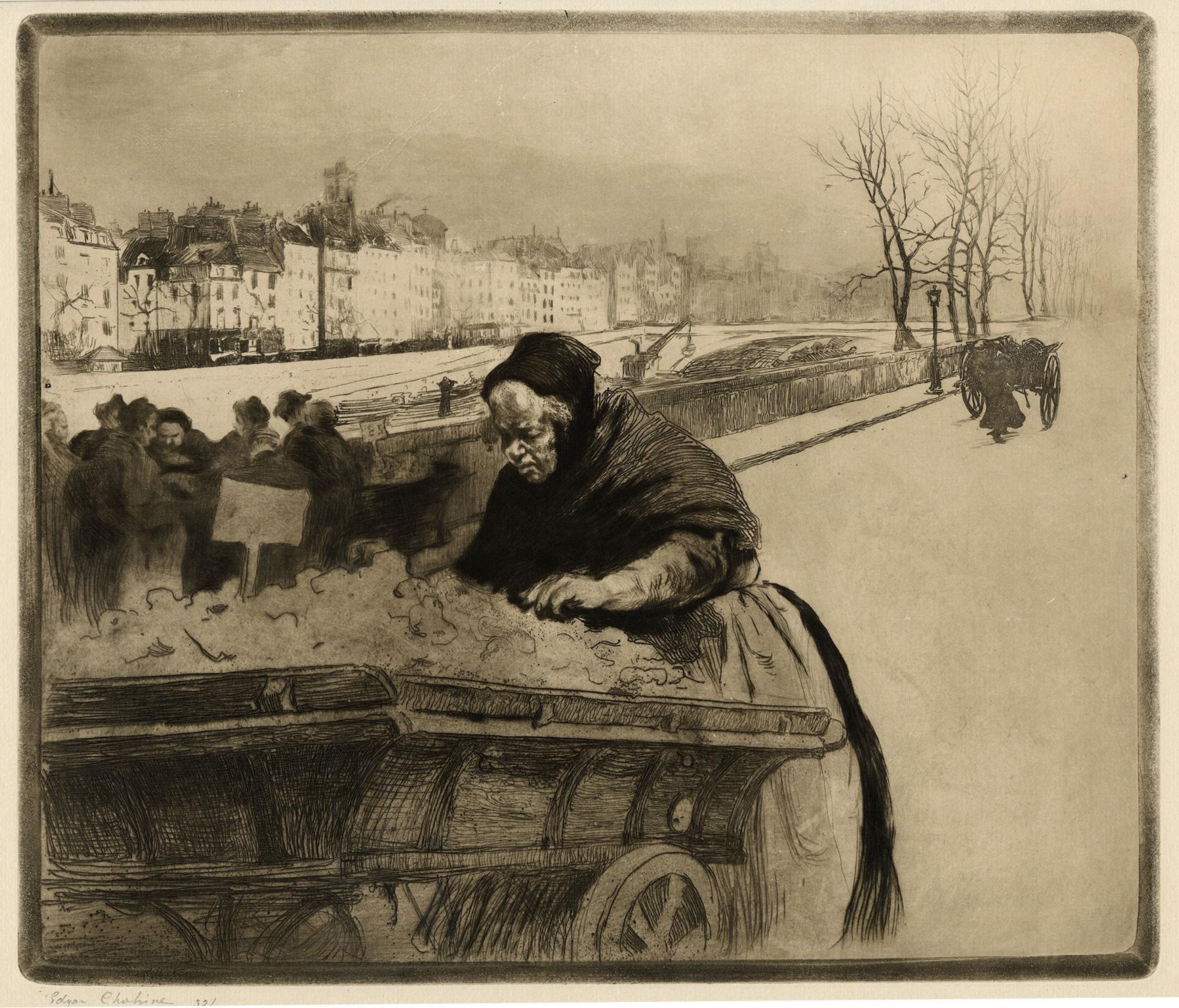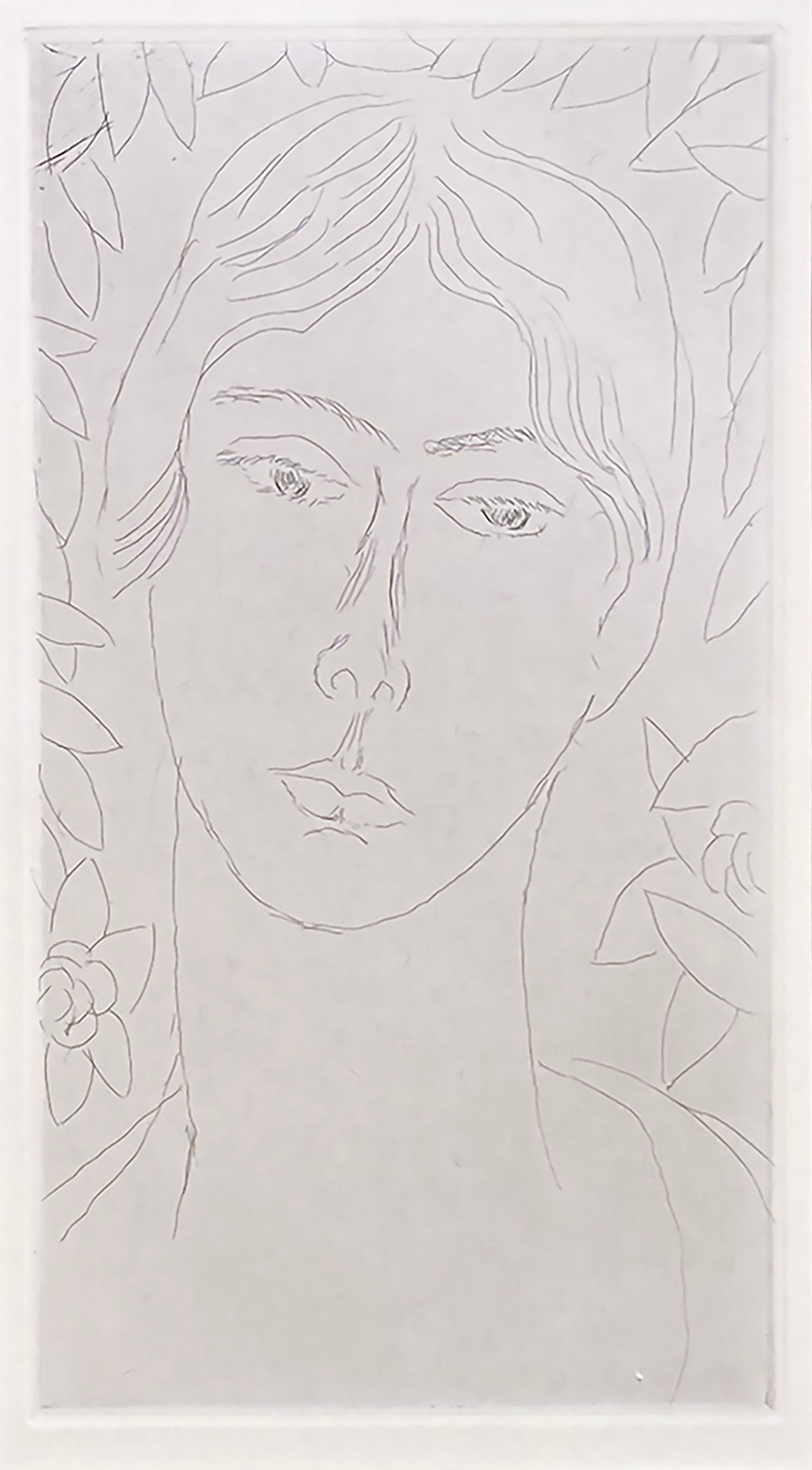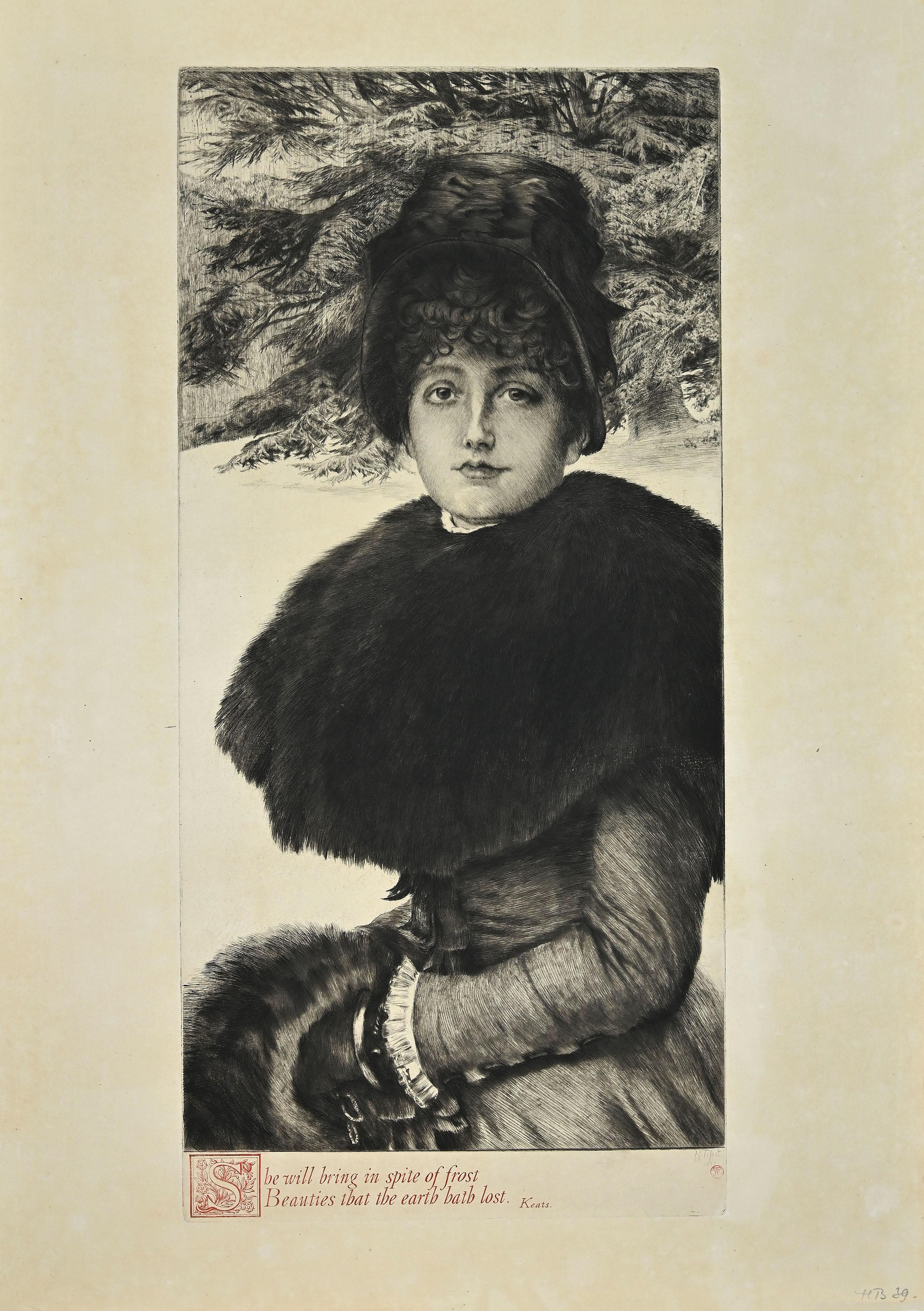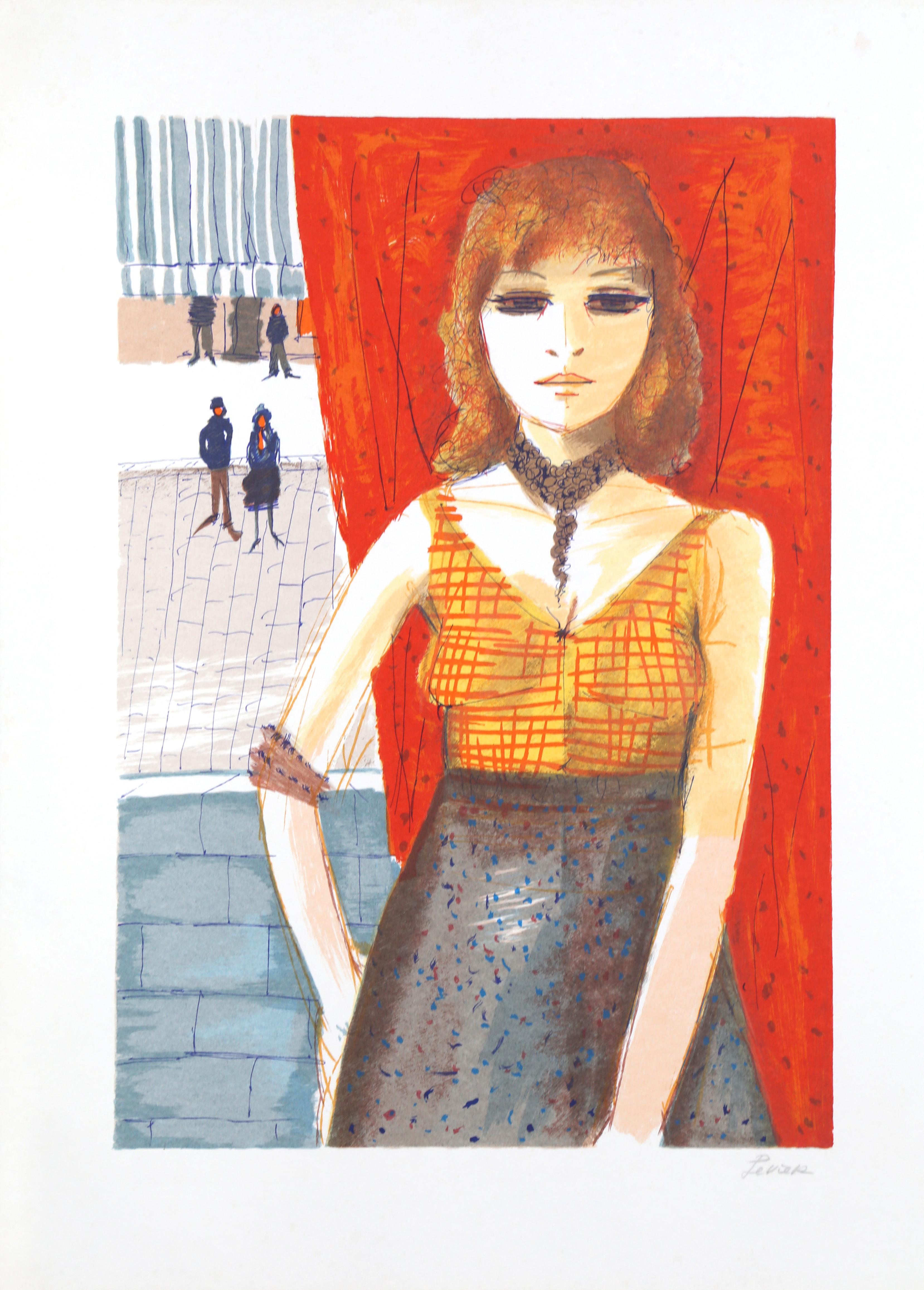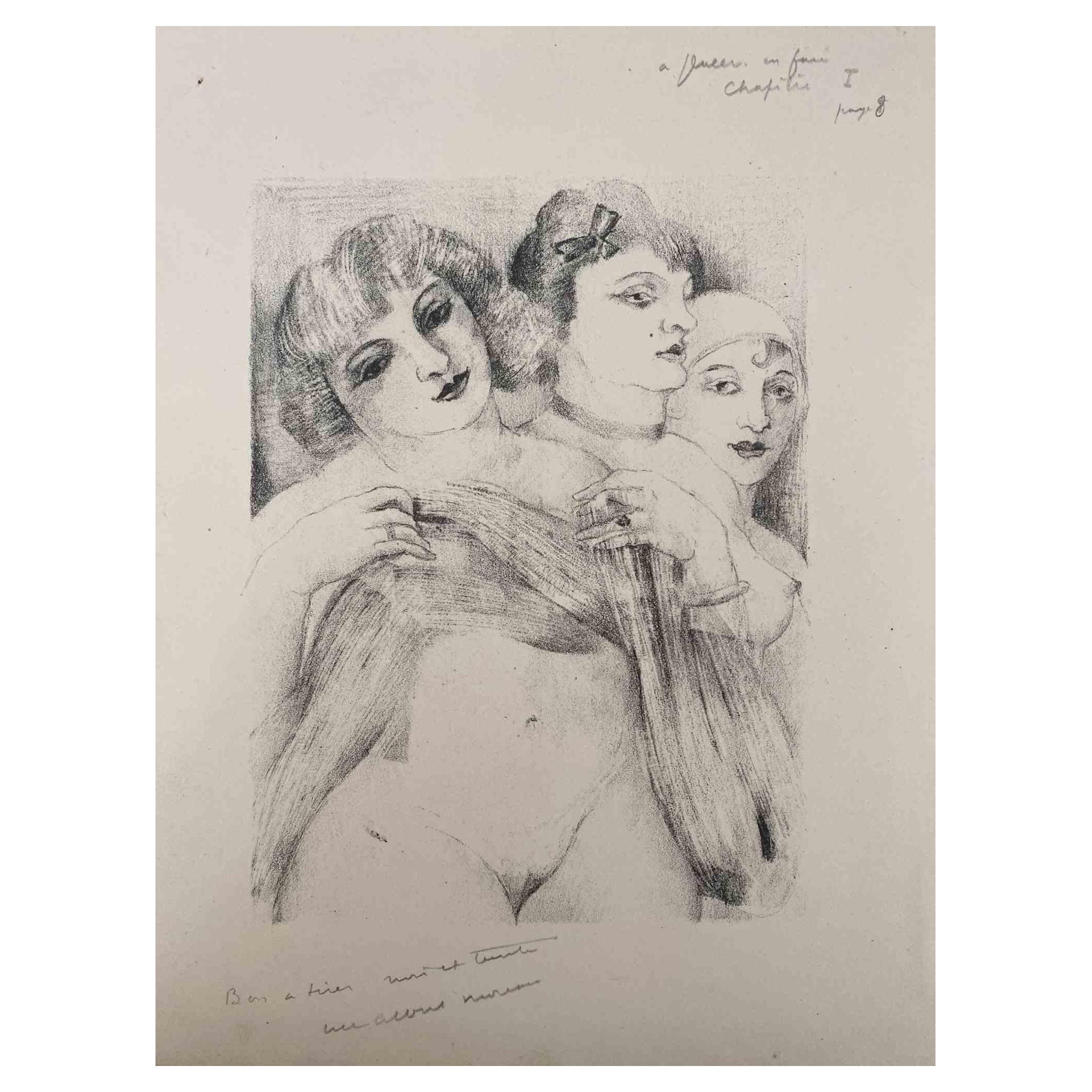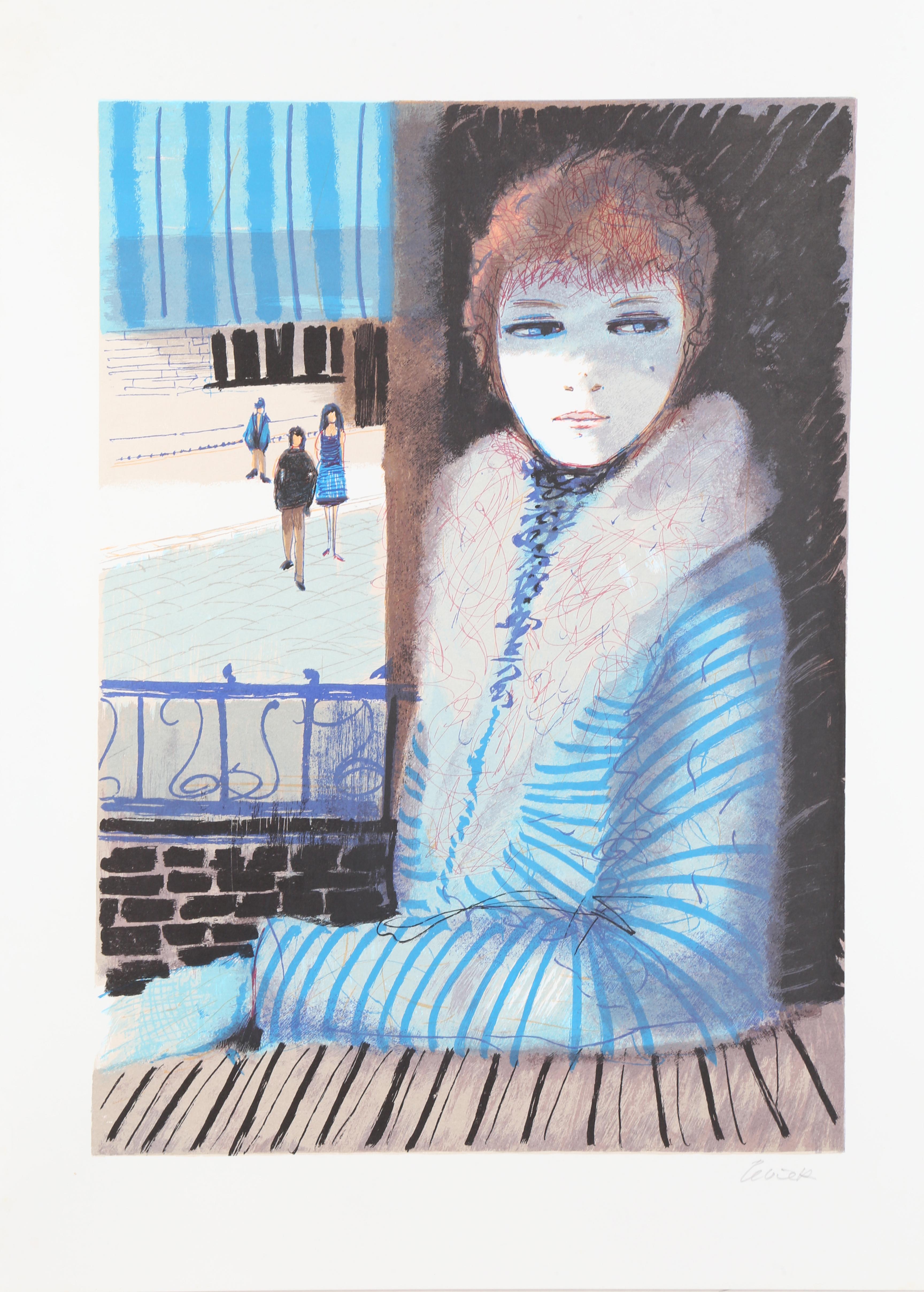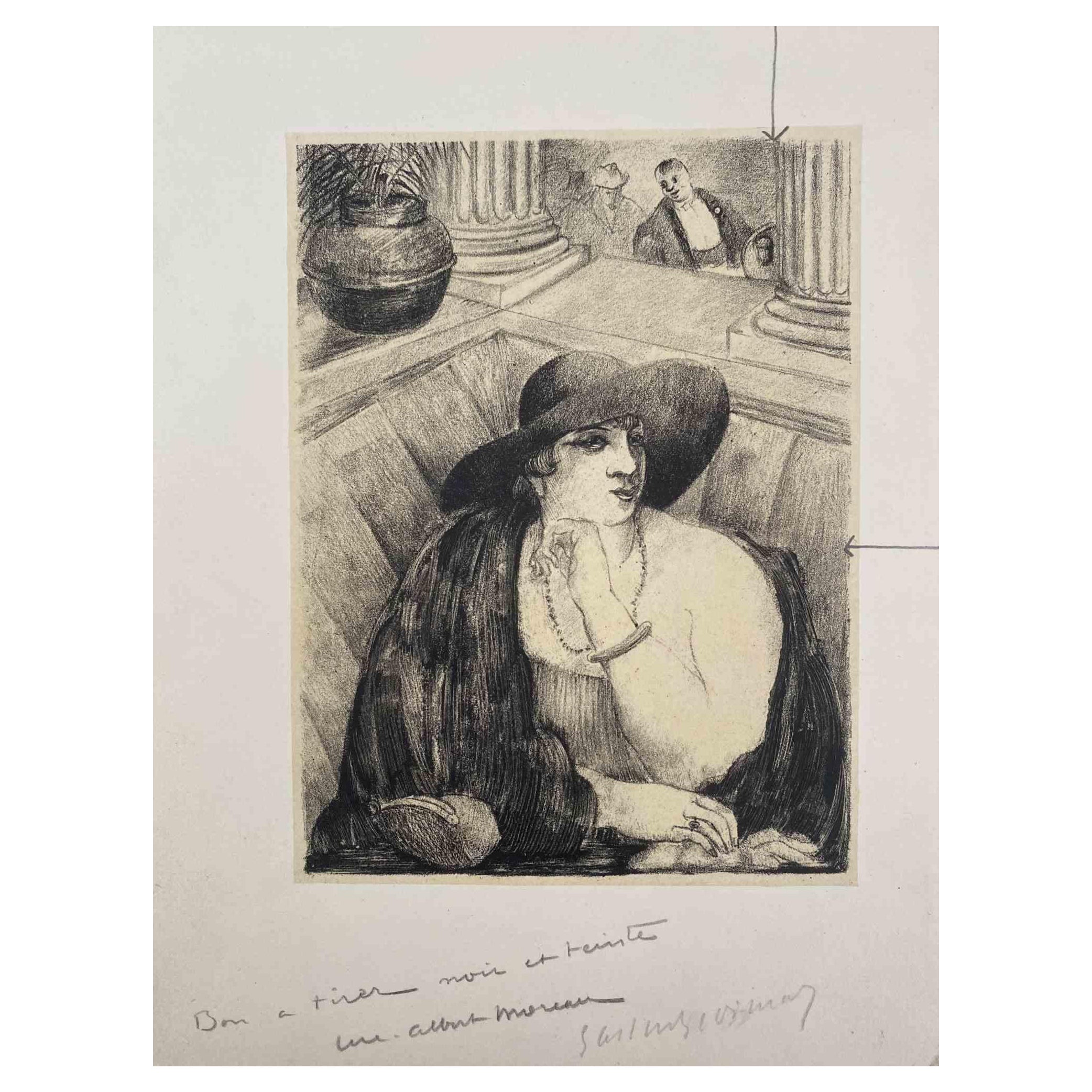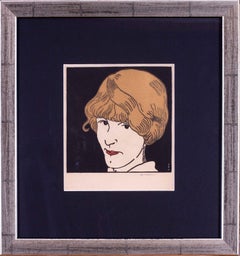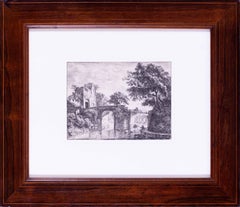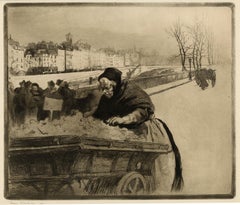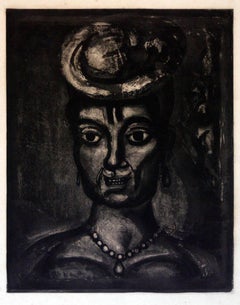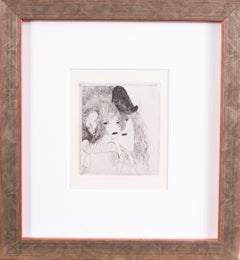
Self portrait from the series ‘L’Eventail’ (The Fan)
Marie LaurencinSelf portrait from the series ‘L’Eventail’ (The Fan)
About the Item
- Creator:Marie Laurencin (1883-1956, French)
- Dimensions:Height: 3.25 in (8.26 cm)Width: 3 in (7.62 cm)Depth: 1 in (2.54 cm)
- Medium:
- Movement & Style:
- Period:
- Condition:Though unsigned (as the vast majority are) these are rare and in very good condition with good deep platemarks. In very good condition, newly framed and mounted behind gallery glass in crisp white mounts in a silver and terracotta frame.
- Gallery Location:Petworth, GB
- Reference Number:1stDibs: LU54033801122
Marie Laurencin
Around 1905 Georges Braque took Marie Laurencin to the Bateau Lavoir, Picasso's famously run-down studio on Rue Ravignan. Laurencin and Braque had both studied at the Académie Humbert. Laurencin originally aimed to paint on porcelain but Braque had the full measure of his colleague's talent and persuaded her to broaden her horizons.
On Rue Ravignan Laurencin found herself in an environment where she could thrive, where painting and literature mingled freely in a state, Picasso said, of permanent cross-fertilization, and at a moment when Fauvism was about to be supplanted by Cubism. Soon Guillaume Apollinaire was devoting to her an important chapter in his The Cubist Painters: Aesthetic Meditations (Peintres Cubistes: Méditations Esthétiques). Married to a German baron she fled France during World War I and lived in Spain, where she met Picabia among others, to return to Paris in 1920.
Laurencin's first canvases are sharper in tone than her later work. From her Ravignan period she left some paintings of real quality which also record the Bateau Lavoir dwellers, famously Picasso and Fernande Olivier, his mistress. Laurencin would enlarge on this composition by grouping together Picasso, Olivier (who wrote Picasso and His Friends [Picasso et ses Amis]), the poet Marguerite Gillot, the poet Maurice Chevrier, Guillaume Apollinaire and André Salmon. The Pont Mirabeau, dear to Apollinaire, can be seen in the background. During her time at Ravignan she also produced burin engravings and woodcuts inspired by fables and romantic street songs.
Laurencin had found her style. She became a painter of doe-like girls, merging realism and fantasy like some poets of her generation. Some see Eugène Carrière's influence in her early works, yet her palette shows much more distinct shading. Laurencin created this unique palette, rich in colors chosen for their softness, the full range of which she explored, deftly and firmly stressing tonalities. Famous among her works are the following: Guitar, Child with Violin, Princess, Sirens, Portrait of Jeannot, Portrait of René Dalize, Portrait of Marcel Jouhandeau and Portrait of André Salmon. She also illustrated many books: Marie Laurencin's Fan (L'Éventail de Marie Laurencin), a collection of poems written for her by writer friends, The Attempt at Love (La Tentative Amoureuse) and The Poems of André Walter (Les Poésies d'André Walter) by André Gide, books by Jacques de Lacretelle, André Salmon, Paul Morand, Louise Faure-Favier and Alice in Wonderland by Lewis Carroll.
Laurencin also pioneered new approaches to theatre set designing, memorably so in the Cocteau and Milhaud collaboration Does (Les Biches) for the Ballets Russes in 1924, and What Do Girls Dream Of? (À Quoi Rêvent les Jeunes Filles?) for the Comédie Française in 1928, even providing themes for the ballet.
She exhibited for the first time in 1907 at the Salon des Indépendants in Paris. In 1912 she showed her work with Robert Delaunay at the Galerie Barbazanges and contributed to the decoration of the Cubist house for the Salon d'Automne. In 1937 at the Petit Palais, Laurencin provided an exemplary sample of her work, including Portrait (1904), Portrait of a Young Woman in a Pink and Black Hat, two canvases executed in 1908 and 1909 and both entitled Guillaume Apollinaire and his Friends (referring to the Picasso circle), Flowers, Two Sisters, Marie Laurencin in Blue (1936), Game of Badminton, Flower Pot, Blue Angel (1929), Young Girls with a Mandolin, Portrait of Madame C.P., Artist and Model, Portrait of Anne-Françoise Mare and Pot and Lemons. In 2002 she featured in the exhibition “Women of Montparnasse” (Elles de Montparnasse) at the Musée du Montparnasse in Paris, chronicling the emancipation of female artists between the wars. In 1994 the Fondation Pierre Gianadda in Martigny presented a retrospective of her work.
Find original Marie Laurencin prints, drawings and watercolor paintings on 1stDibs.
(Biography provided by Leighton Fine Art Ltd.)
- French early 20th Century woodcut by Jean Emile Laboureur, golden hair maskLocated in Petworth, West SussexJean Emile Laboureur (French, 1877-1943) Masque aux cheveux d'or (1912) Woodcut Signed `J E Laboureur’ (lower right) and stamped `The London Studio’ (l...Category
20th Century Cubist Portrait Prints
MaterialsWoodcut
- Henry Moore, signed in pencil, soft ground etching of a girlBy Henry MooreLocated in Petworth, West SussexHenry Moore (British, 1898-1986) Head of a girl Softground etching signed in pencil `Moore’ (lower right) Conceived in 1983 by the Printmaking Department Trust Fund Appeal, The Roya...Category
20th Century Modern Figurative Prints
MaterialsEtching
- 17th Century etching of travellers crossing a bridge after Antoine WaterlooLocated in Petworth, West SussexAfter Antoine Waterloo (Dutch, 1609 – 1690) Travellers crossing the bridge Etching 6.1/4 x 8.3/8 in. (15.8 x 21.2 cm.)Category
17th Century Old Masters Figurative Prints
MaterialsEtching
- British, early 20th Century etching of a lady serving tea in a theatreLocated in Petworth, West SussexMary Viola Paterson (British, 1899 – 1981) Serving tea at the theatre Etching Signed ‘V Paterson’, in pencil (lower right), and number ‘2.’ 5.3/4 x 3.3/4 in. (14.7 x 9.5 cm.) (to pla...Category
Early 20th Century Art Nouveau Figurative Prints
MaterialsEtching
- Signed Walter Richard Sickert etching, 1922 of Harry Anderson – in memoriamLocated in Petworth, West SussexWalter Richard Sickert ARA (British, 1860 – 1942) Harry Anderson – in memoriam etching 1922 signed and titled in ink (lower edge) 5.1/8 x 4.1/2 in. (13 x ...Category
20th Century English School Figurative Prints
MaterialsEtching
- 1982 signed etching by Lucien Freud OM CH, numbered 25/25 L.F 'A couple'Located in Petworth, West SussexLucian Freud OM CH (British, 1922 – 2011) A couple Etching, 1982 Signed with initials and numbered ‘25/25 L.F.’ (lower edge) Plate mark measures 4.1/2 x 4.1/2 in. (11.4 x 11.4 cm.) P...Category
20th Century Modern Figurative Prints
MaterialsEtching
- La Marchande des Quatres-SaisonsBy Edgar ChahineLocated in Middletown, NYEtching with drypoint on cream wove paper, 11 3/4 x 13 3/4 inches (297 x 347 mm), full margins. Signed in pencil and numbered 32/40, lower margin. Minor mat tone and several small lo...Category
Early 20th Century Post-Impressionist Portrait Prints
MaterialsHandmade Paper, Rag Paper, Drypoint, Etching
- "Mlle Landsberg" (grade planche, pl. 16)By Henri MatisseLocated in Missouri, MO"Mlle Landsberg" (grade planche, pl. 16), 1914 Henri Matisse (French, 1869-1954) Signed and Numbered Lower Right Edition 12/15 Image size: 7 7/8 x 4 5/16 inches Sheet size: 17 11/16 x 12 1/2 inches With frame: 19 1/2 x 14 1/2 inches Henri Matisse came from a family who were of Flemish origin and lived near the Belgian border. At eight o'clock on the evening of December 31, 1869, he was born in his grandparents' home in the town of Le Cateau in the cheerless far north of France. His father was a self-made seed merchant who was a mixture of determination and tightly coiled tension. Henri had no clear idea of what he wanted to do with his life. He was a twenty-year-old law clerk convalescing from appendicitis when he first began to paint, using a box of colors given to him by his mother. Little more than a year later, in 1890, he had abandoned law and was studying art in Paris. The classes consisted of drawing from plaster casts and nude models and of copying paintings in the Louvre. He soon rebelled against the school's conservative atmosphere; he replaced the dark tones of his earliest works with brighter colors that reflected his awareness of Impressionism. Matisse was also a violinist; he took an odd pride in the notion that if his painting eye failed, he could support his family by fiddling on the streets of Paris. Henri found a girlfriend while studying art, and he fathered a daughter, Marguerite, by her in 1894. In 1898 he married another woman, Amelie Parayre. She adopted the beloved Marguerite; they eventually had two sons, Jean, a sculptor and Pierre who became an eminent art dealer. Relations between Matisse and his wife were often strained. He often dallied with other women, and they finally separated in 1939 over a model who had been hired as a companion for Mme. Matisse. She was Madame Lydia, and after Mme. Matisse left, she remained with Matisse until he died. Matisse spent the summer of 1905 working with Andre Derain in the small Mediterranean seaport of Collioure. They began using bright and dissonant colors. When they and their colleagues exhibited together, they caused a sensation. The critics and the public considered their paintings to be so crude and so roughly crafted that the group became known as Les Fauves (the wild beasts). By 1907, Matisse moved on from the concerns of Fauvism and turned his attention to studies of the human figure. He had begun to sculpt a few years earlier. In 1910, when he saw an exhibition of Islamic art, he was fascinated with the multiple patterned areas and adapted the decorative universe of the miniatures to his interiors. As a continuation of his interest in the "exotic", Matisse made extended trips to Morocco in 1912 and 1913. At the end of 1917, Matisse moved to Nice; he would spend part of each year there for the remainder of his life. A meticulous dandy, he wore a light tweed jacket amd a tie when he painted. He never used a palette, but instead squeezed his colors on to plain white kitchen dishes...Category
1910s Fauvist Figurative Prints
MaterialsEtching, Drypoint
Price Upon Request - Femme Affranchie A' Quatorze Heures Chante Midi - Georges RouaultBy Georges RouaultLocated in Roma, ITSigned on plate. Edition of 450 prints, belonging to the suite “Miserere”, considered as the most important religious graphic work of XX century. The single prints, realized with a s...Category
1940s Post-Impressionist Figurative Prints
MaterialsEtching
- Promenade dans la Neige - Etching by J. Tissot - 1880By James TissotLocated in Roma, ITBeautiful print on verge crème, 2° state on 3, with letters printed in red. Stamp “Lugt 1545”. Little crack and fold on lower left margin of the sheet. Some small traces of oxidati...Category
1880s Post-Impressionist Portrait Prints
MaterialsDrypoint, Etching
- "King Pin" Pointillist Lithograph in Ink on PaperLocated in Soquel, CA"King Pin" Pointillist Lithograph in Ink on Paper Detailed lithograph of a king on a bench by E.B. Rothewell (American, 1926-2011). A stylized portrait of a king, seated on a large bench. He is looking upwards, with a somewhat dejected expression, hands near his mouth. This piece is completely made from small dots (stippling) giving the subject the feel of a fantasy illustration...Category
Late 20th Century Pointillist Figurative Prints
MaterialsInk, Lithograph, Paper
- "Hopi Maiden" - Print 44/200 Native American Woodcut PortraitBy T.C. CannonLocated in Houston, TXBold and colorful portrait by renowned artist T.C. Cannon of a Native American woman in a stripped shawl titled "Hopi Maiden." Signed along bottom edge. Ed...Category
1970s Post-Impressionist Portrait Prints
MaterialsWoodcut
